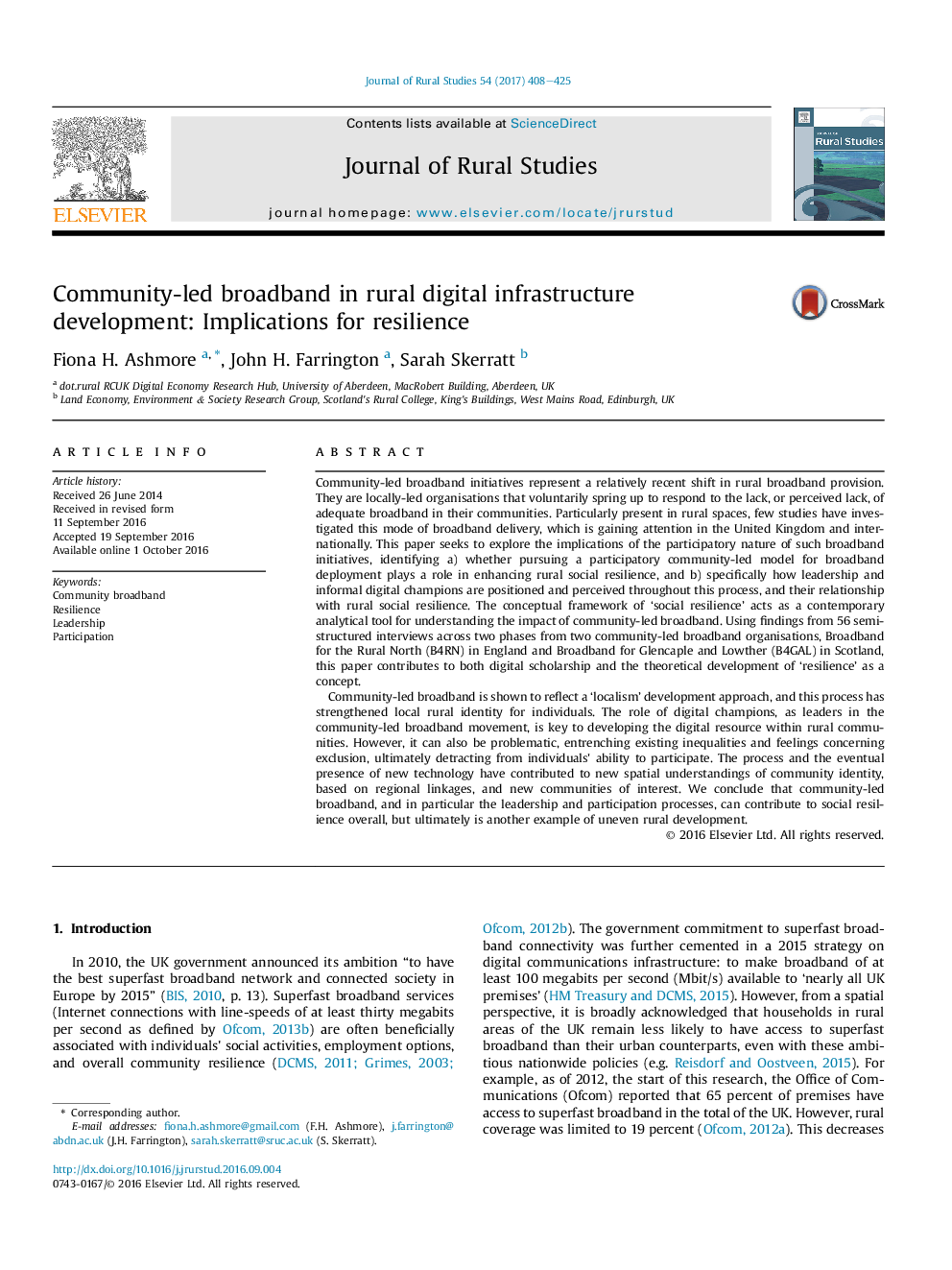| Article ID | Journal | Published Year | Pages | File Type |
|---|---|---|---|---|
| 6460003 | Journal of Rural Studies | 2017 | 18 Pages |
â¢Community-led broadband reflects a 'localism' development approach.â¢These processes are ultimately an example of uneven rural development.â¢Digital leaders are critical for resource identification and engagement.â¢Such leaders can entrench existing inequality, weakening resilience.â¢Resilience theory identifies interdependencies that influence broadband development.
Community-led broadband initiatives represent a relatively recent shift in rural broadband provision. They are locally-led organisations that voluntarily spring up to respond to the lack, or perceived lack, of adequate broadband in their communities. Particularly present in rural spaces, few studies have investigated this mode of broadband delivery, which is gaining attention in the United Kingdom and internationally. This paper seeks to explore the implications of the participatory nature of such broadband initiatives, identifying a) whether pursuing a participatory community-led model for broadband deployment plays a role in enhancing rural social resilience, and b) specifically how leadership and informal digital champions are positioned and perceived throughout this process, and their relationship with rural social resilience. The conceptual framework of 'social resilience' acts as a contemporary analytical tool for understanding the impact of community-led broadband. Using findings from 56 semi-structured interviews across two phases from two community-led broadband organisations, Broadband for the Rural North (B4RN) in England and Broadband for Glencaple and Lowther (B4GAL) in Scotland, this paper contributes to both digital scholarship and the theoretical development of 'resilience' as a concept.Community-led broadband is shown to reflect a 'localism' development approach, and this process has strengthened local rural identity for individuals. The role of digital champions, as leaders in the community-led broadband movement, is key to developing the digital resource within rural communities. However, it can also be problematic, entrenching existing inequalities and feelings concerning exclusion, ultimately detracting from individuals' ability to participate. The process and the eventual presence of new technology have contributed to new spatial understandings of community identity, based on regional linkages, and new communities of interest. We conclude that community-led broadband, and in particular the leadership and participation processes, can contribute to social resilience overall, but ultimately is another example of uneven rural development.
